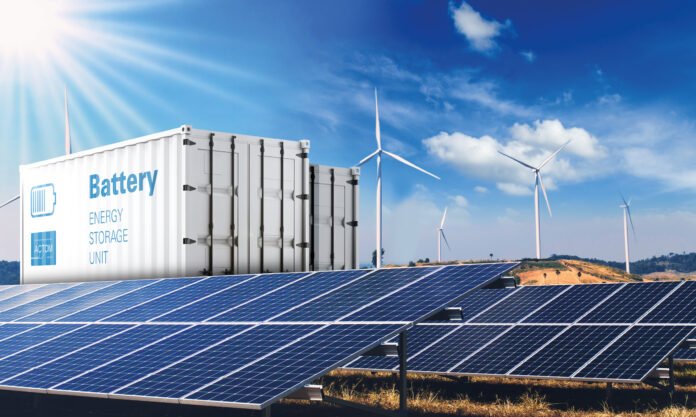South Africa is one of the leading renewable energy markets in Africa, with vast solar resources and ambitious clean energy targets. However, the country faces a familiar challenge: how to store solar energy efficiently and deliver it when demand peaks or when the sun isn’t shining. Battery energy storage systems (BESS) provide the answer, enabling solar farms to supply stable, dispatchable electricity while strengthening the grid. This article explores the role of battery technologies in South Africa’s solar sector, the options available, and the roadmap for large-scale adoption. Learn more at https://bterenewables.com/.
Why Battery Storage Matters for South Africa
Addressing Load Shedding and Grid Instability
South Africa has struggled with rolling blackouts, known as load shedding, due to insufficient generation capacity and an overburdened grid. Battery storage helps solar farms deliver firm, reliable power, reducing strain on the grid and easing dependence on coal-fired plants.
Enhancing Solar Farm Value
Solar PV is intermittent, producing peaks during the day but tapers off at night. By storing excess daytime energy in batteries, solar farms can sell electricity during evening demand peaks, improving profitability.
Supporting Renewable Energy Targets
The government’s Integrated Resource Plan (IRP) envisions a significant expansion of renewables. Battery storage ensures that high levels of solar penetration remain compatible with stable, resilient grid operations.
Key Battery Technologies for Solar Farms
Different battery chemistries bring distinct advantages for utility-scale applications in South Africa.
a) Lithium-Ion Batteries
- Advantages: High efficiency (90–95%), long cycle life, compact design, and rapidly falling costs.
- Applications: Ideal for short- to medium-duration storage (2–6 hours), grid balancing, and peak shaving.
- South Africa Outlook: Lithium-ion dominates current utility-scale projects, with international suppliers scaling up deployments.
b) Flow Batteries (Vanadium Redox, Zinc-Bromine)
- Advantages: Long lifespan, scalable energy capacity, and minimal degradation even with deep cycling.
- Applications: Best suited for long-duration storage (6–12 hours), supporting base-load renewable power.
- South Africa Outlook: Particularly promising, as South Africa holds some of the world’s largest vanadium reserves, making local production and supply chains viable.
c) Sodium-Sulfur (NaS) Batteries
- Advantages: High energy density, good for large-scale storage, and suitable for multi-hour discharge.
- Applications: Load leveling, renewable integration, and industrial-scale applications.
- Challenges: Require high operating temperatures and advanced safety management.
d) Emerging Solid-State Batteries
- Advantages: Higher energy density, improved safety, and potentially lower costs long term.
- Applications: Still in pilot phase, but could revolutionize large-scale storage for solar farms within a decade.
Benefits of Battery Energy Storage in South Africa
Improved Grid Reliability
By dispatching stored solar energy during peak demand or outages, BESS mitigates load shedding and strengthens grid resilience.
Economic Optimization
Solar farms paired with batteries can sell electricity when prices are highest, increasing revenue and improving return on investment.
Renewable Energy Integration
Storage helps manage variability and reduces curtailment, enabling higher shares of solar PV in the national energy mix.
Environmental Gains
Replacing fossil-fuel backup generators with solar-plus-storage reduces greenhouse gas emissions and lowers air pollution.
Rural Electrification
In off-grid areas, solar farms combined with storage can supply consistent electricity to communities, businesses, and agricultural operations.
Case Studies and Market Developments
- Eskom Battery Energy Storage System (BESS) Project: Eskom has launched one of the largest BESS projects in Africa, designed to store excess renewable energy and release it during evening peaks.
- Renewable Independent Power Producer Programme (REIPPPP): The South African government has begun including storage components in tender rounds, encouraging hybrid solar-plus-storage bids.
- Mining Sector Integration: Several South African mining companies are investing in solar-plus-storage to stabilize power supply for operations and reduce reliance on costly diesel generators.
Challenges to Large-Scale Adoption
High Capital Costs
Despite falling prices, the upfront costs of large-scale battery systems remain significant. Access to affordable financing is essential.
Supply Chain Risks
Lithium and cobalt supply chains are vulnerable to global market fluctuations. While vanadium offers local potential, scaling up processing remains a challenge.
Technical Expertise
Maintaining and managing large-scale BESS requires skilled labor and advanced monitoring systems, which are still developing locally.
Regulatory Gaps
South Africa lacks comprehensive frameworks for valuing and compensating grid services provided by batteries, such as frequency regulation and demand response.
Financing and Policy Solutions
Green Financing Mechanisms
Multilateral banks, development finance institutions, and climate funds can provide concessional loans and guarantees to de-risk investments in battery storage.
Local Manufacturing and Value Chains
Encouraging domestic battery production, particularly vanadium flow batteries, can lower costs, create jobs, and strengthen energy security.
Policy Incentives
Feed-in tariffs, tax incentives, and storage-specific procurement auctions will accelerate deployment.
Research & Development
Universities and research institutions should collaborate with industry to test storage technologies under South Africa’s unique conditions.
The Future of Battery Storage in South Africa
The next decade will be pivotal. As battery costs continue to decline and technology improves, storage will shift from a niche addition to a mainstream component of every solar farm. By 2030, South Africa could host gigawatt-scale hybrid solar-plus-storage projects, enabling higher renewable penetration and reducing dependence on coal.
Long-duration technologies like vanadium flow batteries may find a competitive edge, leveraging local mineral resources to drive both the energy transition and economic growth. With the right policies, South Africa can emerge as a continental leader in solar-plus-storage solutions.
To Conclude
Battery energy storage technologies are not just an add-on for South African solar farms; they are the key to unlocking reliable, affordable, and sustainable clean energy. By investing in advanced storage, South Africa can stabilize its grid, reduce load shedding, and accelerate its shift away from coal. With strong policies, financing, and innovation, solar-plus-storage will play a central role in shaping the country’s energy future.
For deeper insights into renewable energy innovations and strategies, visit https://bterenewables.com/.
